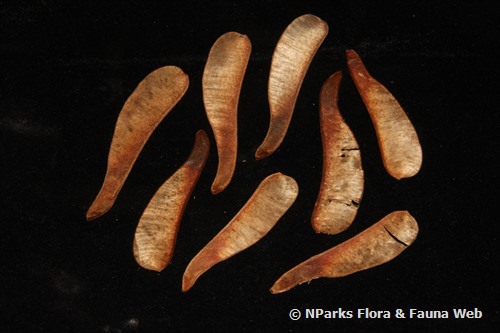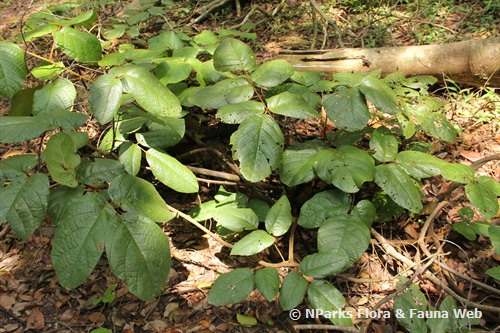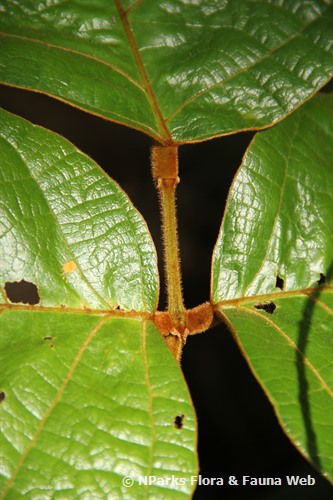
Name
Classifications and Characteristics
| Plant Division | Angiosperms (Flowering Seed Plants) |
|---|---|
| Plant Growth Form | Climber |
| Maximum Height | 50 m |
Biogeography
| Native Distribution | Sumatra, Peninsular Malaysia, Singapore, Borneo, and Java |
|---|---|
| Native Habitat | Terrestrial |
| Preferred Climate Zone | Tropical |
| Local Conservation Status | Native to Singapore (Least Concern (LC)) |
Description and Ethnobotany
| Growth Form | It is a woody climber up to 50 m long. |
|---|---|
| Foliage | Its stalked, trifoliate, pinnate leaves are up to 22.8 cm long, with leathery leaflet blades that are elliptic, and 12–20 by 7–16 cm. |
| Flowers | Its flowers grow in clusters on flowering shoots that are up to 25.4 cm long, are dark pink, with wings that are 2.5–4 by 1–2 mm, a keel that is 2–3 by 1–2 mm, and a claw that is 1.5–3 by 0.2–0.3 mm. |
| Fruit | Its fruit pods are light brown, covered with fine hair, and 4–6 by 1.3–2 cm. Its seeds are 10 by 5–10 mm. |
| Habitat | It grows in primary and secondary forests, on ridges, hill slopes, along roads and at forest edges up to 1000 m altitude. It occurs locally in the vicinities of MacRitchie and Upper Peirce Reservoirs and in Bukit Timah Nature Reserve. |
| Associated Fauna | It is the preferred local food plant for the caterpillars of the butterfly plain banded awl (Hasora vitta), and the moth Cameraria fasciata. |
| Etymology | Latin Spatha, a broad blade; Greek lobos, lobe of the ear, referring to the shape of the fruit pod; Latin ferrugineus, rusty-brown in colour |
Landscaping Features
| Landscape Uses | Trellis / Arbour / Pergola, Reforestation |
|---|
Fauna, Pollination and Dispersal
| Fauna Pollination Dispersal Associated Fauna | Butterfly Host Plant |
|---|
Plant Care and Propagation
| Light Preference | Full Sun |
|---|---|
| Water Preference | Moderate Water |
| Propagation Method | Seed |
Image Repository
Others
| Master ID | 31617 |
|---|---|
| Species ID | 6016 |
| Flora Disclaimer | The information in this website has been compiled from reliable sources, such as reference works on medicinal plants. It is not a substitute for medical advice or treatment and NParks does not purport to provide any medical advice. Readers should always consult his/her physician before using or consuming a plant for medicinal purposes. |


